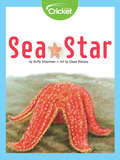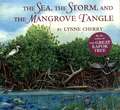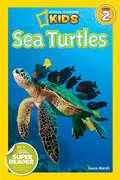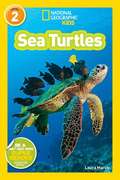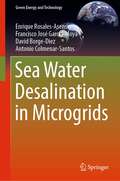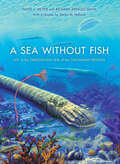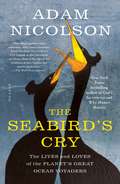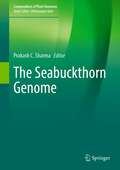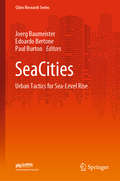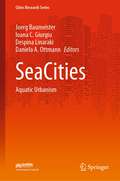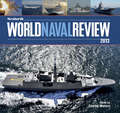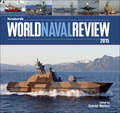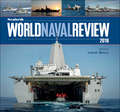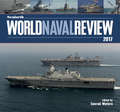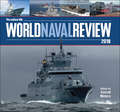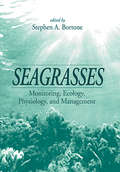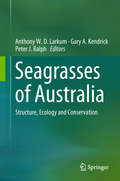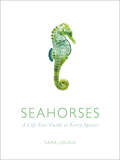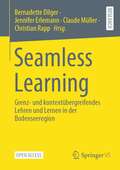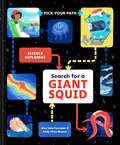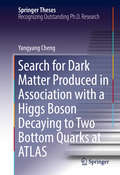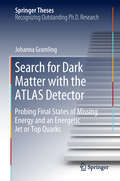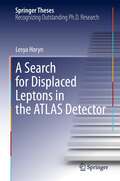- Table View
- List View
Sea Star
by Buffy SilvermanHave you ever seen a sea star before? They are the pretty star-shaped creatures that hang out at the bottom of the ocean. Learn about Sea Star as she finds and eats her favorite food, moves around the ocean floor, and regenerates her broken arm! Learn about these strange invertebrates and the unique lives they live.
The Sea, The Storm, And The Mangrove Tangle
by Lynne CherryA look into a unique ecosystem, one that is endangered in many places <P> A seed is jostled from a branch of a mangrove tree and floats to a lagoon in the Caribbean Sea. It takes root, sprouts leaves, and slowly begins to grow. Over many years, the mangrove will provide a home and nourishment for numerous creatures of land and sea. Among its roots come to live fiddler crabs and shrimp; in its branches dwell lizards and hummingbirds. Soon the tree is dropping seeds of its own, and other mangroves are growing, creating a tangle whose benefits extend even to large mammals like dolphins and manatees. There are endpaper maps that indicate where mangroves are located and the names of common animals and plants found in them. <P> Ever threatened by hurricanes and even more by human destruction, the mangroves of our planet are endangered, but in Lynne Cherry's richly illustrated story one such habitat survives, giving readers hope and inspiration for preservation of these ecosystems in the real world.
Sea Turtles (Readers)
by Laura MarshWho could resist celebrating sea turtles? They may seem like lazy ocean reptiles drifting with the oceans&’ currents, but they are actually long-distance swimmers that spend their entire lives searching for food and a mate. What&’s more, they come with their own built-in GPS, returning to the exact beach where they were born to lay their own eggs. Kids will learn all about these tranquil and mysterious animals through brilliant photography and illustrations, plus the trusted and distinctive content you love from NG Kids!
Sea Turtles (National Geographic Kids Readers #Level 2)
by Laura Marsh National Geographic Kids StaffWho could resist celebrating sea turtles? They may seem like lazy ocean reptiles drifting with the oceans’ currents, but they are actually long-distance swimmers that spend their entire lives searching for food and a mate. What’s more, they come with their own built-in GPS, returning to the exact beach where they were born to lay their own eggs.
Sea Water Desalination in Microgrids (Green Energy and Technology)
by Enrique Rosales-Asensio David Borge-Diez Antonio Colmenar-Santos Francisco José García-MoyaThis book investigates the sustainability performance of system that use microgrids in desalination processes. Climate change may be especially dramatic in its effects on island environments. In these environments, aquifers and wells could become over exploited resulting the use of desalination plans. The synergies between water, energy, and food sectors have been identified as vital in achieving the United Nation’s Sustainable Development Goals.The book explores desalination and microgrids technically as well the economic and legal aspects that must be considered in order explore their techno-economic feasibility - analyzing how to improve the desalination process, proposing a method to locate and size a microgrid. Other synergies between the water, energy, and food system are discussed and the benefits to society that might result in these systems. Also, the lessons learned are highlighted in the context of how they may apply to other sustainable enterprises.
A Sea without Fish: Life in the Ordovician Sea of the Cincinnati Region (Life of the Past)
by David L. Meyer Richard Arnold DavisA “superbly written, richly illustrated” guide to the animals who lived 450 million years ago—in the fossil-rich area where Cincinnati, Ohio now stands (Rocks & Minerals).The region around Cincinnati, Ohio, is known throughout the world for the abundant and beautiful fossils found in limestones and shales that were deposited as sediments on the sea floor during the Ordovician Period, about 450 million years ago—some 250 million years before the dinosaurs lived. In Ordovician time, the shallow sea that covered much of what is now the North American continent teemed with marine life. The Cincinnati area has yielded some of the world’s most abundant and best-preserved fossils of invertebrate animals such as trilobites, bryozoans, brachiopods, molluscs, echinoderms, and graptolites.So famous are the Ordovician fossils and rocks of the Cincinnati region that geologists use the term “Cincinnatian” for strata of the same age all over North America. This book synthesizes more than 150 years of research on this fossil treasure-trove, describing and illustrating the fossils, the life habits of the animals represented, their communities, and living relatives, as well as the nature of the rock strata in which they are found and the environmental conditions of the ancient sea.“A fascinating glimpse of a long-extinct ecosystem.” —Choice
The Seabird's Cry: The Lives and Loves of the Planet's Great Ocean Voyagers
by Adam NicolsonLife itself could never have been sustainable without seabirds. As Adam Nicolson writes: "They are bringers of fertility, the deliverers of life from ocean to land."A global tragedy is unfolding. Even as we are coming to understand them, the number of seabirds on our planet is in freefall, dropping by nearly 70% in the last sixty years, a billion fewer now than there were in 1950. Of the ten birds in this book, seven are in decline, at least in part of their range. Extinction stalks the ocean and there is a danger that the grand cry of the seabird colony, rolling around the bays and headlands of high latitudes, will this century become little but a memory.Seabirds have always entranced the human imagination and NYT best-selling author Adam Nicolson has been in love with them all his life: for their mastery of wind and ocean, their aerial beauty and the unmatched wildness of the coasts and islands where every summer they return to breed. The seabird’s cry comes from an elemental layer in the story of the world.Over the last couple of decades, modern science has begun to understand their epic voyages, their astonishing abilities to navigate for tens of thousands of miles on featureless seas, their ability to smell their way towards fish and home. Only the poets in the past would have thought of seabirds as creatures riding the ripples and currents of the entire planet, but that is what the scientists are seeing now today.
The Seabuckthorn Genome (Compendium of Plant Genomes)
by Prakash C. SharmaThis work is the first compilation of comprehensive deliberations on botany, cytogenetics and sex determination, genetic resources and diversity, classical breeding, molecular markers and genome sequence resources, and application of omics technology including transcriptomics, proteomics, and metabolomics resources in the multipurpose medicinal plant seabuckthorn. The book also presents a detailed narrative on antioxidative, radioprotective nutraceutical, and medicinal applications of seabuckthorn products. A detailed treatment has been included on analytical techniques and processing technologies. Altogether, the book contains about 300 pages over 17 chapters contributed by globally reputed experts on the relevant field in this important plant species. This book will be useful to the research students, teachers, and scientists in the academia and private sector engaged in horticulture, genetics, breeding, molecular biology, biotechnology, and breeding. The book will also be a useful source for workers involved in the development of plant-based medicines, nutraceuticals, therapeutics, and cosmeceuticals and extension workers involved in the development of rural farmers and small-scale industries.
SeaCities: Urban Tactics for Sea-Level Rise (Cities Research Series)
by Joerg Baumeister Edoardo Bertone Paul BurtonThis book presents and discusses a strategy which includes four approaches to dealing with the risk of sea-level rise and other water hazards. It also offers opportunities for cities to explore urban extensions such as marine estates, aquatic food production systems, new sea related industries, maritime transport developments, new oceanic tourist attractions, and the designation of additional coastal ecological zones. The urban interface between Sea and Cities generates, therefore, both burning issues and valuable opportunities and raises the question of whether it is possible to solve the former by exploiting the latter?
SeaCities: Aquatic Urbanism (Cities Research Series)
by Joerg Baumeister Ioana C. Giurgiu Despina Linaraki Daniela A. OttmannThis book highlights the research outcome of Cities Research Institute's SeaCities group at Griffith University and a panel with the same title which took place at the World Expo in Dubai 2021/22 supported by the UN. It reflects on topics which are relevant for a future aquatic urbanism like the evolution of a taxonomy for aquatic urbanism, island and ecological wetland development, the planning aspects of seascapes, as well as drivers for floating communities and aquacultural urbanism. The book broadens the perspective of the previous book "SeaCities: Urban Tactics for Sea-Level Rise" published in 2021 from a terrestrial towards an amphibious and aquatic understanding of future city development.
Seaforth World Naval Review 2013
by Conrad Waters&“The 2013 edition . . . includes four articles on significant ships, respectively; French Navy, US Coast Guard, German Navy and Indian Navy.&”—Firetrench Reviews Launched in 2009, this annual has rapidly established a reputation as an authoritative but affordable summary of all that has happened in the naval world in the previous twelve months. It combines the standing features of regional surveys with one-off major articles on noteworthy new ships and other important developments. Besides the latest warship projects, it also looks at wider issues of importance to navies, such as aviation and electronics, and calls on expertise from around the globe to give a balanced picture of what is going on and to interpret its significance. Special features for the 2013 edition include in-depth studies of the navies of Italy and Ireland, plus analyses of significant new warship classes: the French Aquitaine class frigates, Indian Shivalik class Project 17 frigates, German Braunschweig class corvettes, and US Bertholf class national security cutters. Intended to make interesting reading as well as providing authoritative reference, there is a strong visual emphasis, including specially commissioned drawings and the most recently released photographs and artists&’ impressions. This annual has become &“a must for those wishing to keep up with world naval affairs&” (Scuttlebutt).
Seaforth World Naval Review 2015: 2015
by Conrad WatersThe &“profusely illustrated&” yearly military reference that features world fleet reviews, significant ship developments, and technological advancements (Ships Monthly). Now in its seventh year, this annual has established an international reputation as an authoritative but affordable summary of all that has happened in the naval world in the previous twelve months. It combines regional surveys with one-off major articles on noteworthy new ships and other important developments. Besides the latest warship projects, it also looks at wider issues of importance to navies, such as aviation and electronics, and calls on expertise from around the globe to give a balanced picture of what is going on and to interpret its significance. The 2015 edition looks in detail at the French Navy and the Bangladesh and Myanmar navies, while significant ships include the Montford Point class mobile landing platforms, the Samuel Beckett offshore patrol vessels, and the Skjold class fast attack craft. There are technological reviews dealing with naval aviation by David Hobbs, and current mine warfare developments by Norman Friedman, while warship recycling is discussed by Ian Buxton. Intended to make interesting reading as well as providing authoritative reference, there is a strong visual emphasis, including specially commissioned drawings and the most up-to-date photographs and artists&’ impressions. For anyone with an interest in contemporary naval affairs, whether an enthusiast or a defense professional, this annual has become required reading.
Seaforth World Naval Review 2016
by Conrad Waters&“The crème de la crème of naval writers . . . an extremely detailed overview of the last year in naval policy, construction and deployment.&”—Warship World This annual has an established reputation as an authoritative but affordable summary of all that has happened in the naval world in the previous twelve months. It combines regional surveys with one-off major articles on noteworthy new ships and other important developments. Besides the latest warship projects, it also looks at wider issues of importance to navies, such as aviation and electronics, and calls on expertise from around the globe to give a balanced picture of what is going on and to interpret its significance. This edition looks in detail at the Royal Navy as it faces the latest defense review, and evaluates the Indonesian Navy, while significant ships will include the USN&’s San Antonio class amphibious transports, the new Dutch OPVs, the Turkish Milgem class corvettes and the Greek Roussen class fast attack craft. There are also technological reviews dealing with naval aviation by David Hobbs, focusing on maritime patrol aircraft, while Norman Friedman surveys recent electronic warfare developments. Intended to make interesting reading as well as providing authoritative reference, there is a strong visual emphasis, including specially commissioned drawings and the most up-to-date photographs and artists&’ impressions. For anyone with an interest in contemporary naval affairs, whether an enthusiast or a defense professional, this annual has become required reading. &“A high-quality, deeply-researched and handsomely-illustrated book.&”—Army Rumour Service
Seaforth World Naval Review 2017
by Conrad Waters&“This fascinating book examines trends in maritime strategy and geopolitics . . . including technological advances and significant new ships.&”—Nautilus Telegraph This annual has an established reputation as an authoritative but affordable summary of all that has happened in the naval world in the previous twelve months. It combines regional surveys with one-off major articles on noteworthy new ships and other important developments. Besides the latest warship projects, it also looks at wider issues of importance to navies, such as aviation and electronics, and calls on expertise from around the globe to give a balanced picture of what is going on and to interpret its significance. Features of this edition include an in-depth analysis of the Royal Netherlands Navy, while Significant Ships will cover the USN&’s radical new Zumwalt class destroyers, the Republic of Korea&’s amphibious assault ship Dokdo, and the JMSDF&’s Akizuki class destroyers, among others. There are also technological reviews dealing with naval aviation by David Hobbs (with a focus on the present state of the RN&’s Fleet Air Arm), while Norman Friedman surveys naval surface-to-surface missiles. The World Naval Review is intended to make interesting reading as well as providing authoritative reference, so there is a strong visual emphasis, including specially commissioned drawings and the most up-to-date photographs and artists&’ impressions. For anyone with an interest in contemporary naval affairs, whether an enthusiast or a defense professional, this annual has become required reading. &“An extraordinarily useful annual from the point of view of a comprehensive update on the world&’s navies . . . a key resource for keeping up, whether in cabin or armchair.&”—Seaweed
Seaforth World Naval Review 2018: 2018
by Conrad WatersThe yearly military reference that&’s &“a well written, easy to read and well illustrated discussion of current naval power world-wide&”—Thomo&’s Hole. Now firmly established as an authoritative but affordable summary of all that has happened in the naval world in the previous twelve months, this annual combines regional surveys with one-off major articles on noteworthy new ships and other important developments. Besides the latest warship projects, it also looks at wider issues of importance to navies, such as aviation and weaponry, and calls on expertise from around the globe to give a balanced picture of what is going on and to interpret its significance. Features of this edition include an analysis of the Republic of Korea Navy and the response to its aggressive northern neighbor. Significant Ships will cover the USN&’s revamped Arleigh Burke class destroyer design, German F125 class frigates, and the RNZN&’s Otago class offshore patrol vessels. There are also technological reviews dealing with naval aviation by David Hobbs, RN missile programs by Richard Scott, while Norman Friedman turns his attention to new generation weapons technology. The World Naval Review is intended to make interesting reading as well as providing authoritative reference, so there is a strong visual emphasis, including specially commissioned drawings and the most up-to-date photographs and artists&’ impressions. For anyone with an interest in contemporary naval affairs, whether an enthusiast or a defense professional, this annual has become required reading.
Seagrasses: Monitoring, Ecology, Physiology, and Management
by Stephen A. BortoneSeagrasses are becoming widely used as in situ indicators of the relative health and condition of subtropical and tropical estuarine ecosystems. To permit meaningful management of our estuaries, there is clearly a need to develop and refine ways of effectively monitoring and assessing seagrasses.Seagrasses: Monitoring, Ecology, Physiology, and
Seagrasses of Australia
by Gary A. Kendrick Peter J. Ralph Anthony W. LarkumThis book takes the place of “Biology of Seagrasses: A Treatise on the Biology of Seagrasses with Special Reference to the Australian Region”, co-edited by A.W.D. Larkum, A.J. MaCComb and S.A. Shepherd and published by Elsevier in 1989. The first book has been influential, but it is now 25 years since it was published and seagrass studies have progressed and developed considerably since then. The design of the current book follows in the steps of the first book. There are chapters on taxonomy, floral biology, biogeography and regional studies. The regional studies emphasize the importance of Australia having over half of the world’s 62 species, including some ten species published for Australia since the previous book. There are a number of chapters on ecology and biogeography; fish biology and fisheries and dugong biology are prominent chapters. Physiological aspects again play an important part, including new knowledge on the role of hydrogen sulphide in sediments and on photosynthetic processes. Climate change, pollution and environmental degradation this time gain an even more important part of the book. Decline of seagrasses around Australia are also discussed in detail in several chapters. Since the first book was published two new areas have received special attention: blue carbon and genomic studies. Seagrasses are now known to be a very important player in the formation of blue carbon, i.e. carbon that has a long turnover time in soils and sediments. Alongside salt marshes and mangroves, seagrasses are now recognized as playing a very important role in the formation of blue carbon. And because Australia has such an abundance and variety of seagrasses, their role in blue carbon production and turnover is of great importance. The first whole genomes of seagrasses are now available and Australia has played an important role here. It appears that seagrasses have several different suites of genes as compared with other (land) plants and even in comparison with freshwater hydrophytes. This difference is leading to important molecular biological studies where the new knowledge will be important to the understanding and conservation of seagrass ecosystems in Australia. Thus by reason of its natural abundance of diverse seagrasses and a sophisticated seagrass research community in Australia it is possible to produce a book which will be attractive to marine biologists, coastal scientists and conservationists from many countries around the world.
Seahorses: A Life-Size Guide to Every Species
by Sara A. LourieAbsolutely captivating creatures, seahorses seem like a product of myth and imagination rather than of nature. They are small, elusive, and are named for their heads, which are shaped like miniature ponies with tiny snouts. They swim slowly upright by rapidly fanning their delicate dorsal fin, coil their tails to anchor themselves in a drift, and spend days in a dancing courtship. Afterward, it is the male who carries the female's eggs in his pouch and hatches the young. Seahorses are found worldwide, and they are highly sensitive to environmental destruction and disturbance, making them the flagship species for shallow-water habitat conservation. They are as ecologically important as they are beautiful. Seahorses celebrates the remarkable variety of seahorse species as well as their exquisiteness. 57 species, including seadragons and pipefish, are presented in lush, life-size photographs alongside descriptive drawings, and each entry includes detailed and up-to-date information on natural history and conservation. Sara Lourie, a foremost expert on seahorse taxonomy, presents captivating stories of species that range from less than an inch to over a foot in height, while highlighting recent discoveries and ecological concerns. Accessibly written, but comprehensive in scope, this book will be a stunning and invaluable reference on seahorse evolution, biology, habitat, and behavior. Masters of camouflage and rarely seen, seahorses continue to be a fascinating subject of active research. This visually rich and informative book is certain to become the authoritative guide to these charming and unusual wonders of the sea, beloved at aquariums the world over.
Seamless Learning: Grenz- und kontextübergreifendes Lehren und Lernen in der Bodenseeregion
by Bernadette Dilger Jennifer Erlemann Claude Müller Christian RappDas Konzept des «Seamless Learning» unterstützt kontextübergreifendes und barrierefreies Lehren und Lernen durch die Integration digitaler Technologien und die Berücksichtigung von Kontext und Anforderungen der jeweiligen Lehr- / Lernszenarien. Diese Publikation beschreibt wie «Seamless Learning» konzeptionell umgesetzt werden kann und die sechs beschriebenen Projekte zeigen die Umsetzung in unterschiedlichen Wissensdomänen exemplarisch auf.Dies ist ein Open-Access-Buch.
Search for a Giant Squid: Pick Your Path (Science Explorers)
by Amy Seto ForresterA new and exciting pick-your-path STEM adventure for emerging readers! <P><P> This series starter takes emerging readers on an expedition to the ocean's twilight zone in search of a giant squid. But giant squids are hard to find. Readers will need to join the expedition and help make choices along the way. <P><P> First they'll pick their submersible. And then their pilot and dive site. They'll need to be careful—not every path leads where it seems, but whatever path they pick, they';ll see and learn amazing things! <P><P> This introduction to the career of marine zoologist, and the other members of a deep-sea expedition, lets readers dip their toes into being a teuthologist—a scientist who studies cephalopods such as octopus and squid. <P><P><i>Advisory: Bookshare has learned that this book offers only partial accessibility. We have kept it in the collection because it is useful for some of our members. Benetech is actively working on projects to improve accessibility issues such as these.</i>
Search for Charginos Nearly Mass-Degenerate with the Lightest Neutralino
by Shingo KazamaIn this book, the anomaly mediated supersymmetry breaking (AMSB) model is explored by searching for charged winos with their subsequent decays collected with the ATLAS detector at the Large Hadron Collider (LHC). The author develops a new method, called "re-tracking," to detect charged winos that decay before reaching the Semiconductor Tracker (SCT) detector. Because the nominal tracking algorithm at the ATLAS experiment requires at least seven successive hits in the inner tracking system, the sensitivity to charged winos having a fraction of a nanosecond in the past analysis was therefore limited. However, re-tracking requires a minimum of three pixel hits and provides a fully efficient tracking capability for charged winos traversing the pixel detector, resulting in around about 100 times greater efficiency for charged winos with a lifetime ~0. 2 ns longer than that in past searches. Signal topology is characterized by a jet with large transverse momentum (pT), large missing transverse energy, and a high-pT disappearing track. There are three types of back ground tracks: interacting hadron tracks, charged leptons, and tracks with mismeasured pT. A background estimation based on the Monte Carlo (MC) simulation suffers from large uncertainties due to poor statistics and has difficulty simulating the properties of background tracks. Therefore, a data-driven approach has been developed by the author of the book to estimate the background track-pT spectrum. No significant excess above the background expectation is observed for candidate tracks with large transverse momentum, and constraints on the AMSB model are obtained. The author shows that in the AMSB model, a charged wino mass below 270 GeV is excluded at 95 % confidence level, which also directly constrains the mass of wino dark matter.
Search for Dark Matter Produced in Association with a Higgs Boson Decaying to Two Bottom Quarks at ATLAS
by Yangyang ChengThis thesis reports on the search for dark matter in data taken with the ATLAS detector at CERN's Large Hadron Collider (LHC). The identification of dark matter and the determination of its properties are among the highest priorities in elementary particle physics and cosmology. The most likely candidate, a weakly interacting massive particle, could be produced in the high energy proton-proton collisions at the LHC. The analysis presented here is unique in looking for dark matter produced together with a Higgs boson that decays into its dominant decay mode, a pair of b quarks. If dark matter were seen in this mode, we would learn directly about the production mechanism because of the presence of the Higgs boson. This thesis develops the search technique and presents the most stringent production limit to date.
Search for Dark Matter with the ATLAS Detector: Probing Final States Of Missing Energy And An Energetic Jet Or Top Quarks (Springer Theses)
by Johanna GramlingThis book discusses searches for Dark Matter at the CERN’s LHC, the world’s most powerful accelerator. It introduces the relevant theoretical framework and includes an in-depth discussion of the Effective Field Theory approach to Dark Matter production and its validity, as well as an overview of the formalism of Simplified Dark Matter models. Despite overwhelming astrophysical evidence for Dark Matter and numerous experimental efforts to detect it, the nature of Dark Matter still remains a mystery and has become one of the hottest research topics in fundamental physics.Two searches for Dark Matter are presented, performed on data collected with the ATLAS experiment. They analyze missing-energy final states with a jet or with top quarks. The analyses are explained in detail, and the outcomes and their interpretations are discussed, also in view of the precedent analysis of theoretical approaches. Given its depth of coverage, the book represents an excellent reference guide for all physicists interested in understanding the theoretical and experimental considerations relevant to Dark Matter searches at the LHC.
A Search for Displaced Leptons in the ATLAS Detector (Springer Theses)
by Lesya HorynThis thesis presents a search for long-lived particles decaying into displaced electrons and/or muons with large impact parameters. This signature provides unique sensitivity to the production of theoretical lepton-partners, sleptons. These particles are a feature of supersymmetric theories, which seek to address unanswered questions in nature. The signature searched for in this thesis is difficult to identify, and in fact, this is the first time it has been probed at the Large Hadron Collider (LHC). It covers a long-standing gap in coverage of possible new physics signatures. This thesis describes the special reconstruction and identification algorithms used to select leptons with large impact parameters and the details of the background estimation. The results are consistent with background, so limits on slepton masses and lifetimes in this model are calculated at 95% CL, drastically improving on the previous best limits from the Large Electron Positron Collider (LEP).
